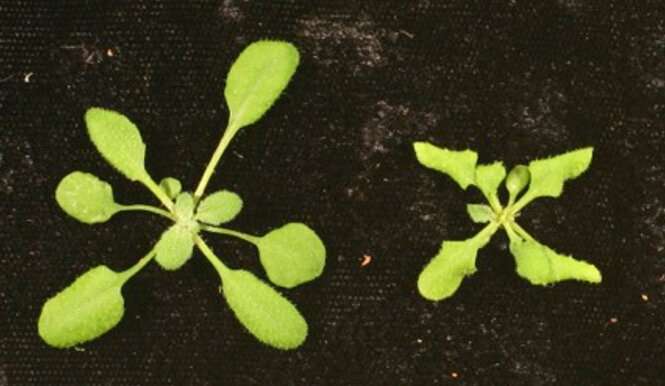HOME
Researchers have uncovered one way plants respond to hormonal cues

Plants with a mutation in the gene for an enzyme called DX01 (on right) were stunted in their growth compared to normal plants. The researchers found this owed to a breakdown in the process by which messenger RNA is tagged for degradation. Credit: Courtesy of the Gregory laboratory
Just like other organisms, plants must respond dynamically to a variety of cues over their lifetime. Going through different developmental stages, or altering their form in response to a drought or drastic temperature change requires altering which of their genes are expressed into proteins and when those processes occur.
In a new paper in Developmental Cell, a research team led by Penn biologists Brian Gregory and Xiang Yu identified a mechanism by which plants can conduct this agile regulation of gene expression. They unpacked the details of a process whereby hormone signaling triggers the removal of a structure called nicotinamide adenine dinucleotide (NAD+) from one end, called the 5' end, of certain messenger RNA (mRNA) molecules, the transcripts that give rise to proteins. When present, these caps direct the cell to break down the associated mRNA transcript, ensuring that its corresponding protein is not made.
"We saw changes in the level of mRNA NAD+ capping occurring in different plant tissues and in different developmental stages," says Gregory, senior author on the paper and an associate professor in the School of Arts & Sciences' Department of Biology. "This appears to be a potentially quick on/off switch that plants can use to regulate their RNA levels."
News Source